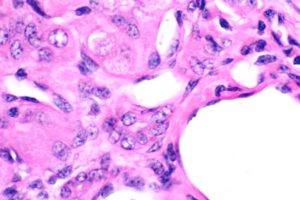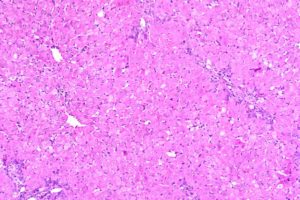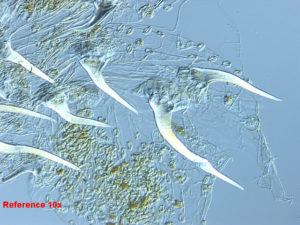Know your pasture! Lantana poisoning in a group of steers
By Cat Barr, PhD
With over 800,000 tests run annually, TVMDL encounters many challenging cases. Our case study series will highlight these interesting cases to increase awareness among veterinary and diagnostic communities.
A herd of steers, weighing approximately 700 lbs. and roughly 8 months old, was moved onto a ryegrass/native pasture. After about a month, four steers were found dead while 17 steers exhibited peeling and crusting noses with thickening of ear and eye margins. The animals did not exhibit any clinical signs of illness and were alert, but would seek shade. The ranch reported having one steer die per day. A serum clinical chemistry panel indicated significant cholestasis: total bilirubin, 5.8 mg/dL; SGOT, 297 U/L; and GGT, 719 U/L. On necropsy, the nostrils were denuded and scabby and there was some thickening of the ears and skin over the flanks. The heart had dark yellow edema at its base and white spots throughout the endocardium and there was dark yellow fluid in the pericardial sac. Additionally, the urine was noted as being dark. There was renal edema, as well as edema throughout the musculature and body cavities. Microscopically, there was necrosis of individual hepatocytes. Bile canaliculi were markedly distended with accumulated bile and there were many Kupffer cells with bile pigment. The skin exhibited full-thickness necrosis with a fibrinopurulent exudation, bacterial colonization and edema. All of this pointed toward a secondary photosensitization. Fragments of Lantana camara were found in the rumen content, and the plant was later found in the pasture.
To learn more about this case, contact Dr. Cat Barr, Veterinary Toxicologist at the College Station lab. For more information on TVMDL’s test catalog, visit tvmdl.tamu.edu.



